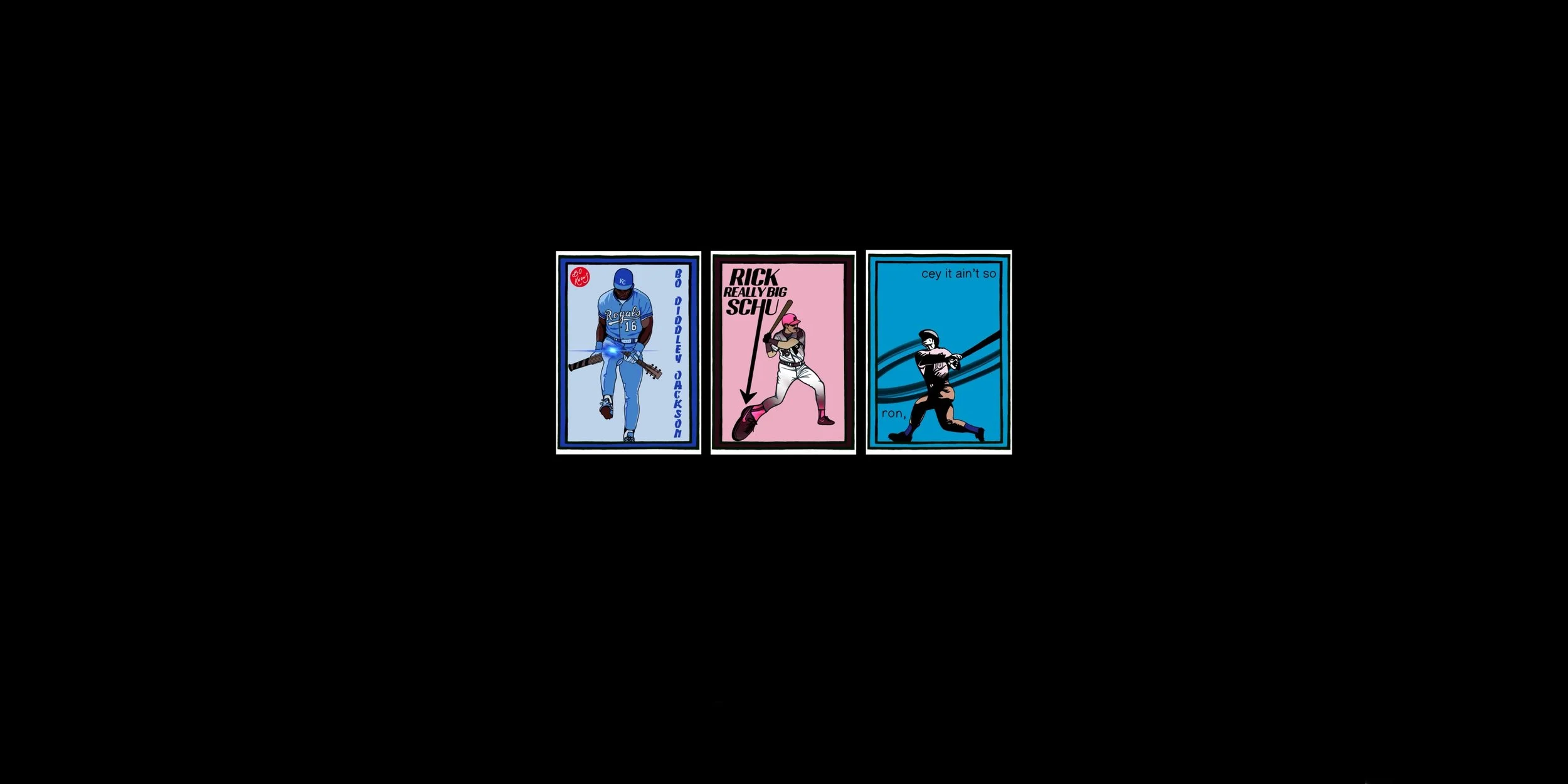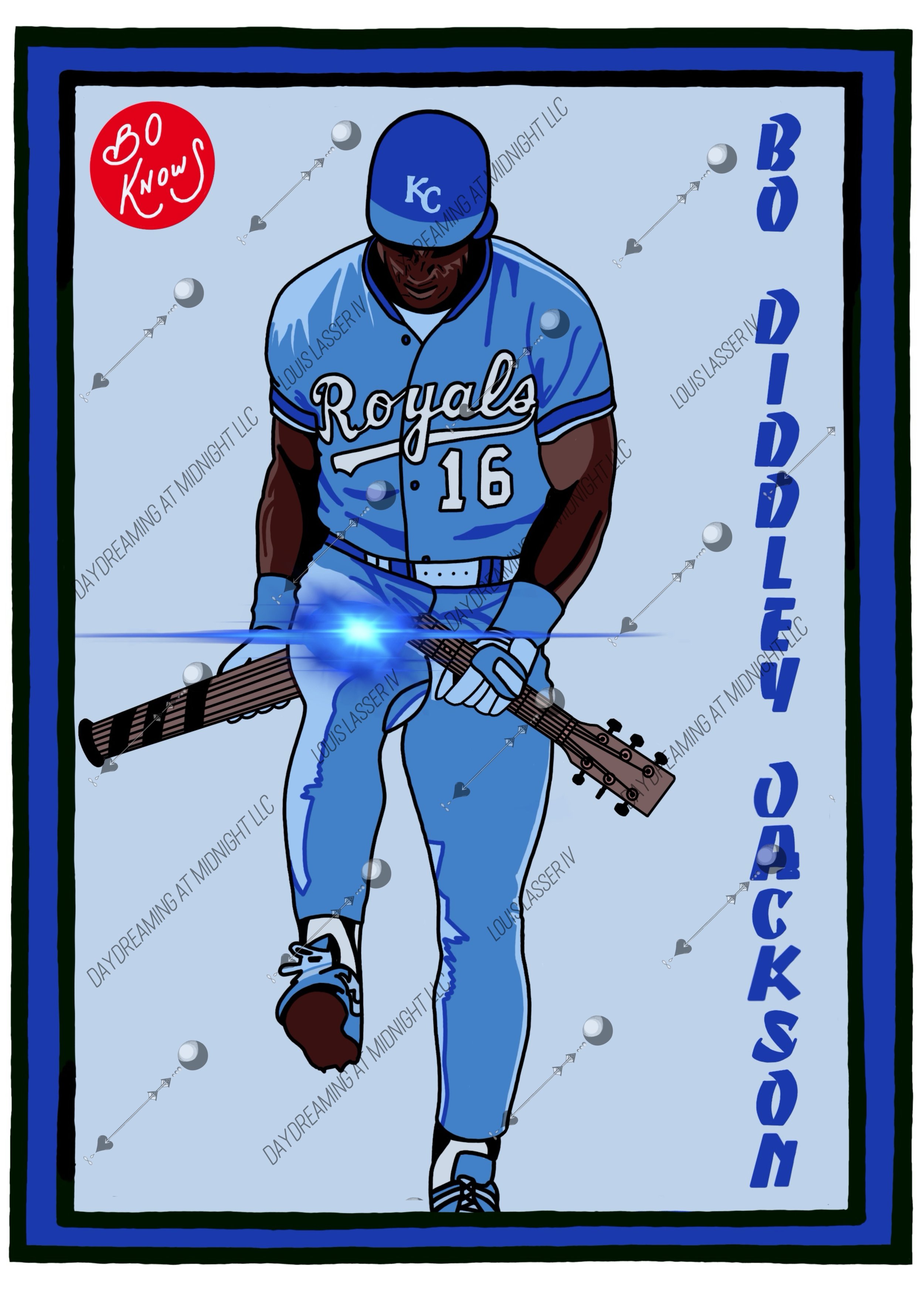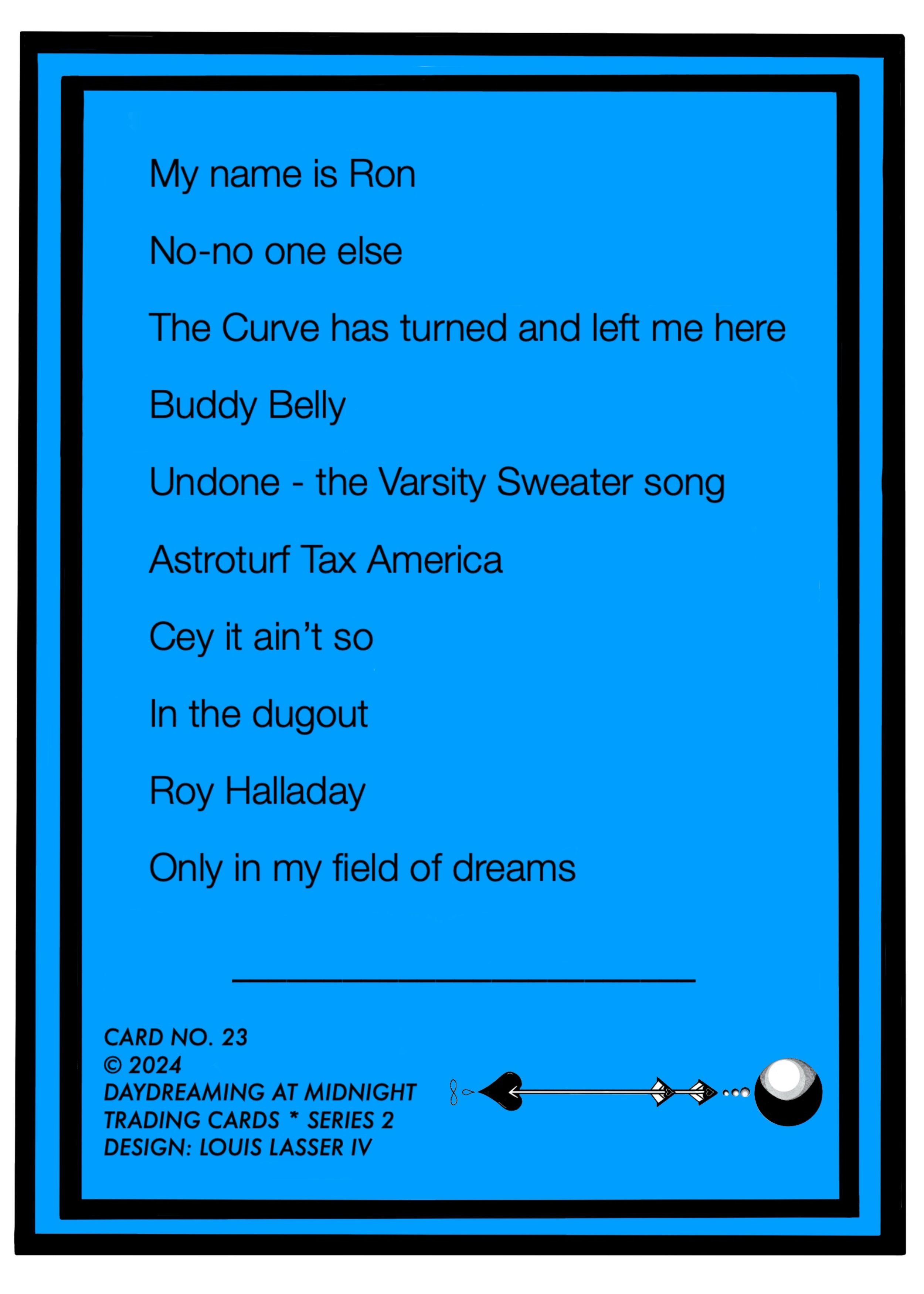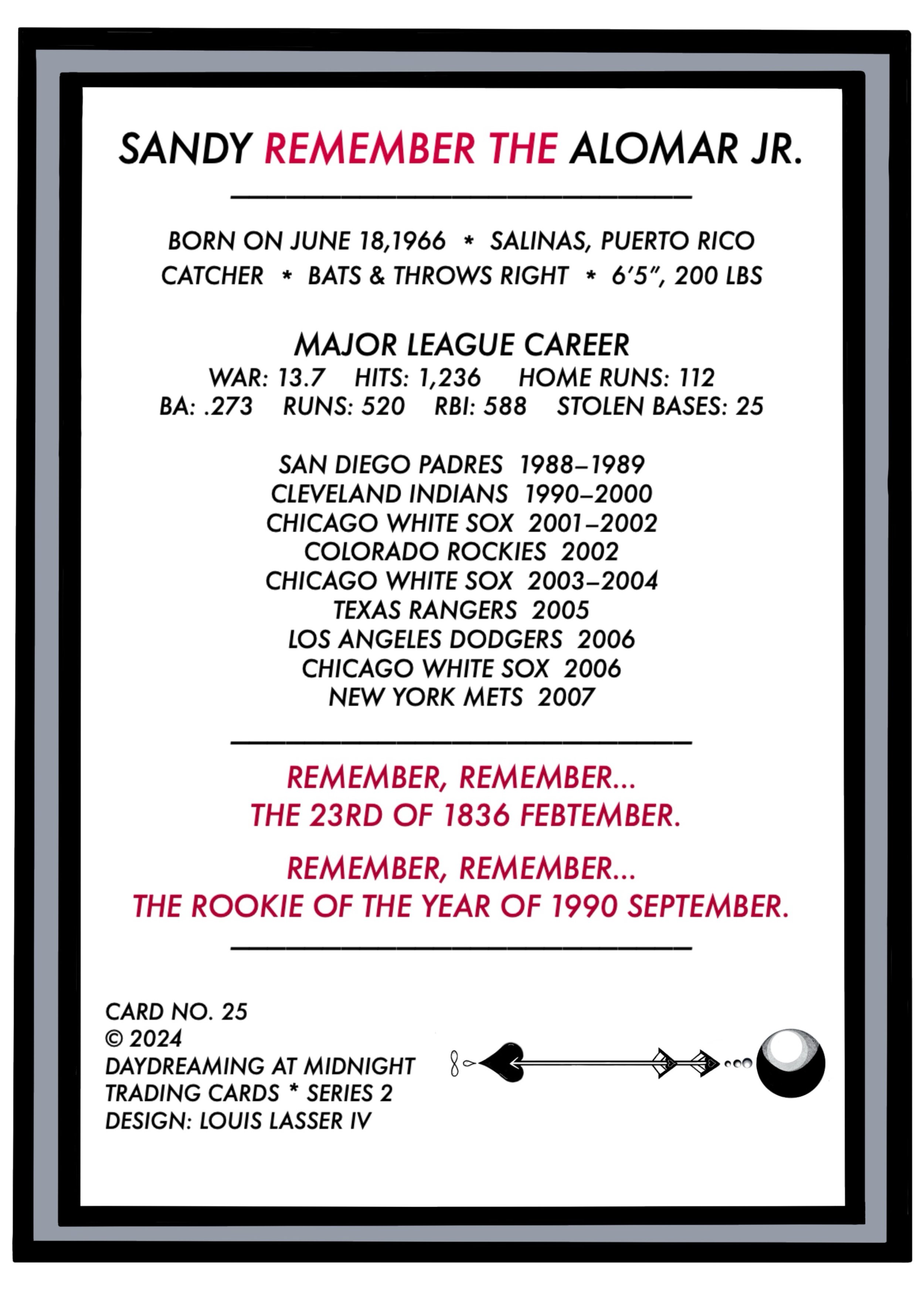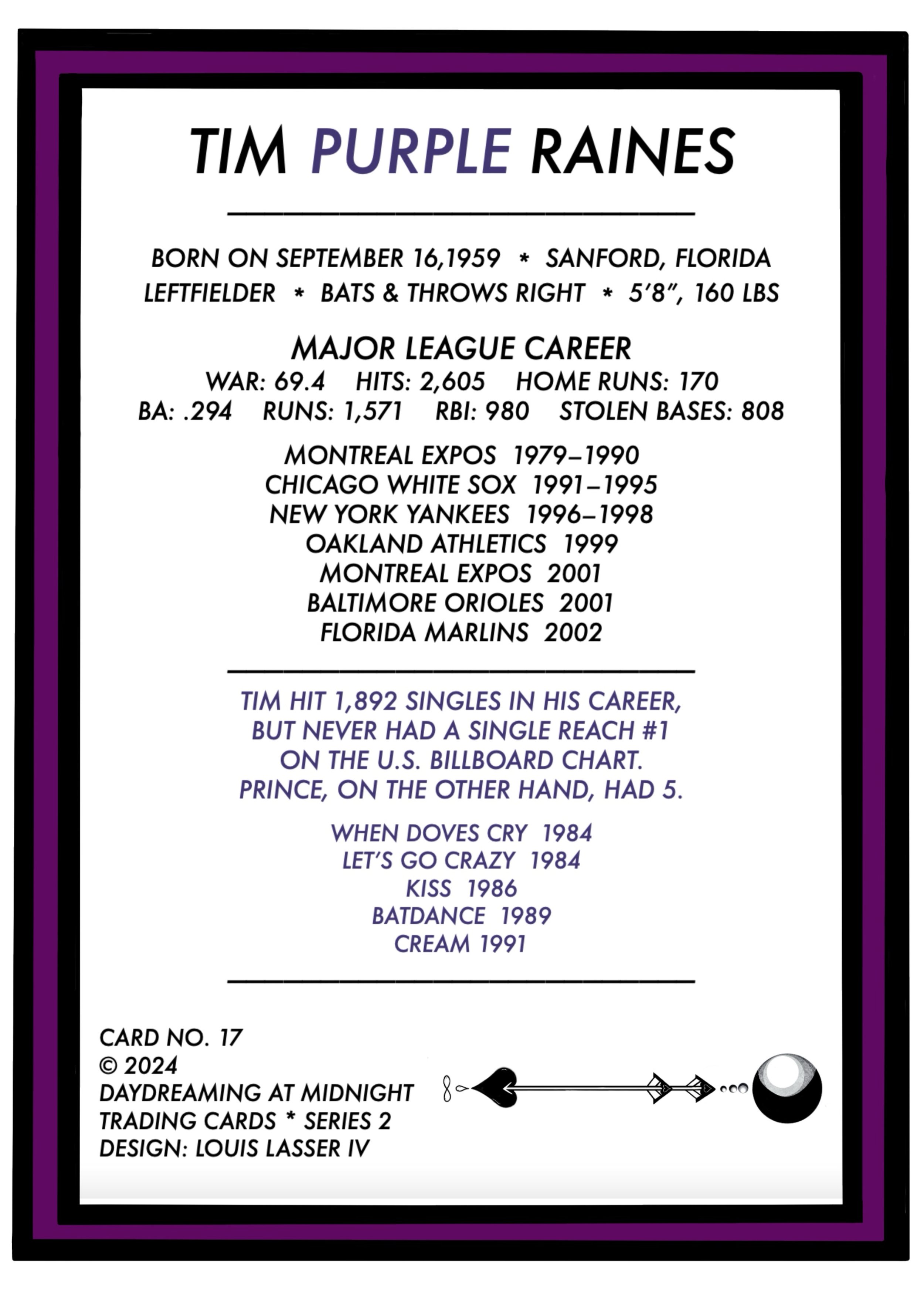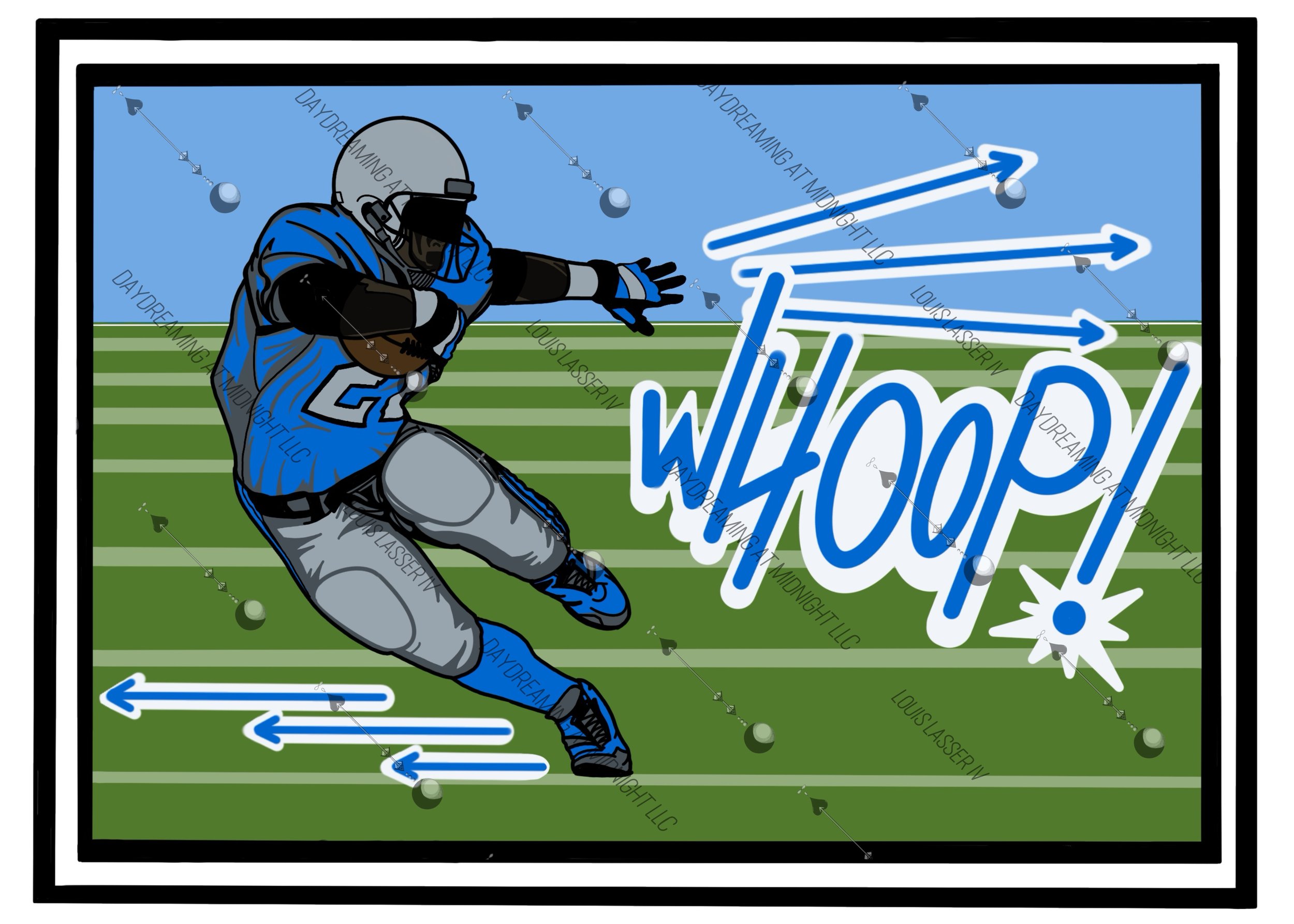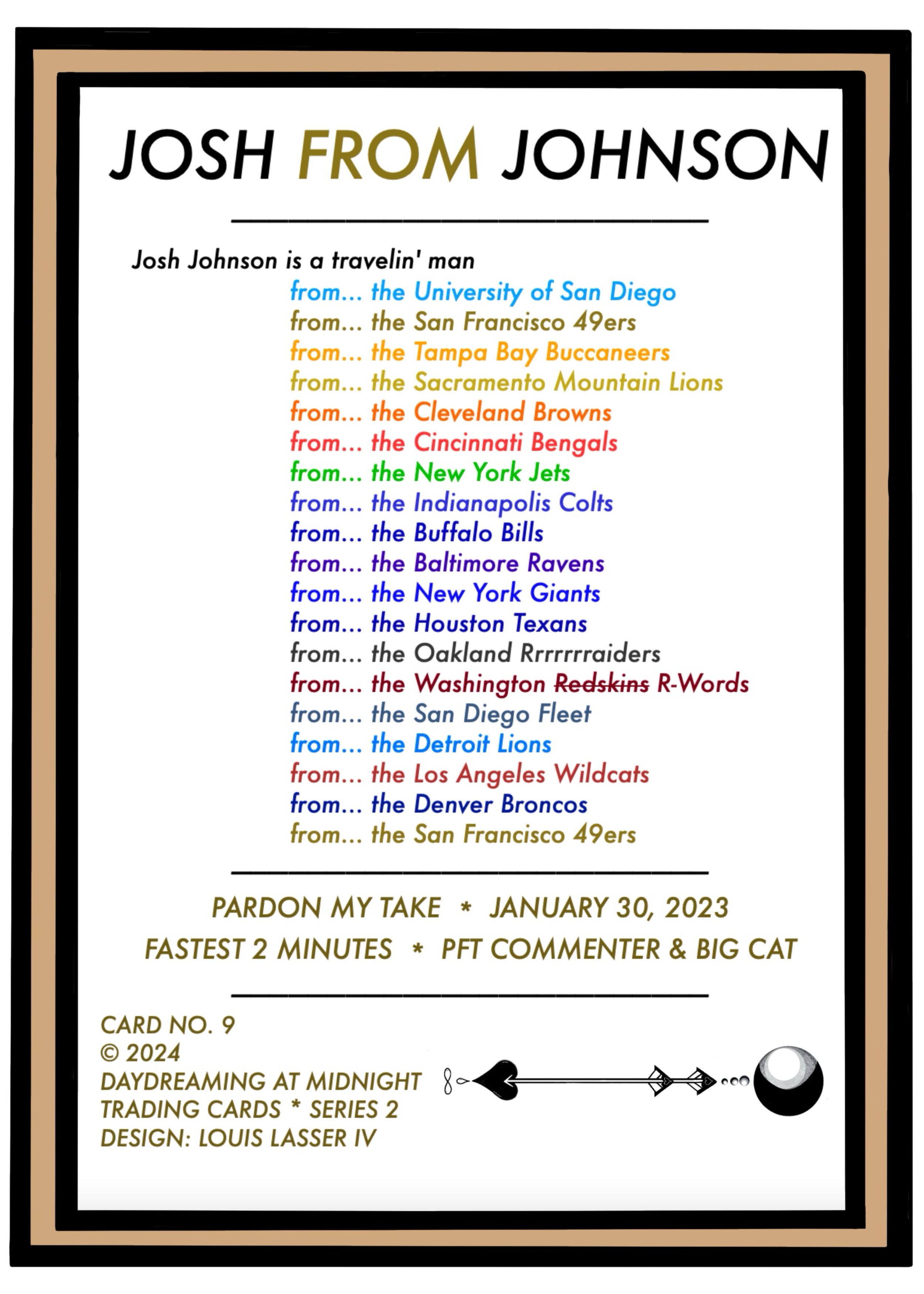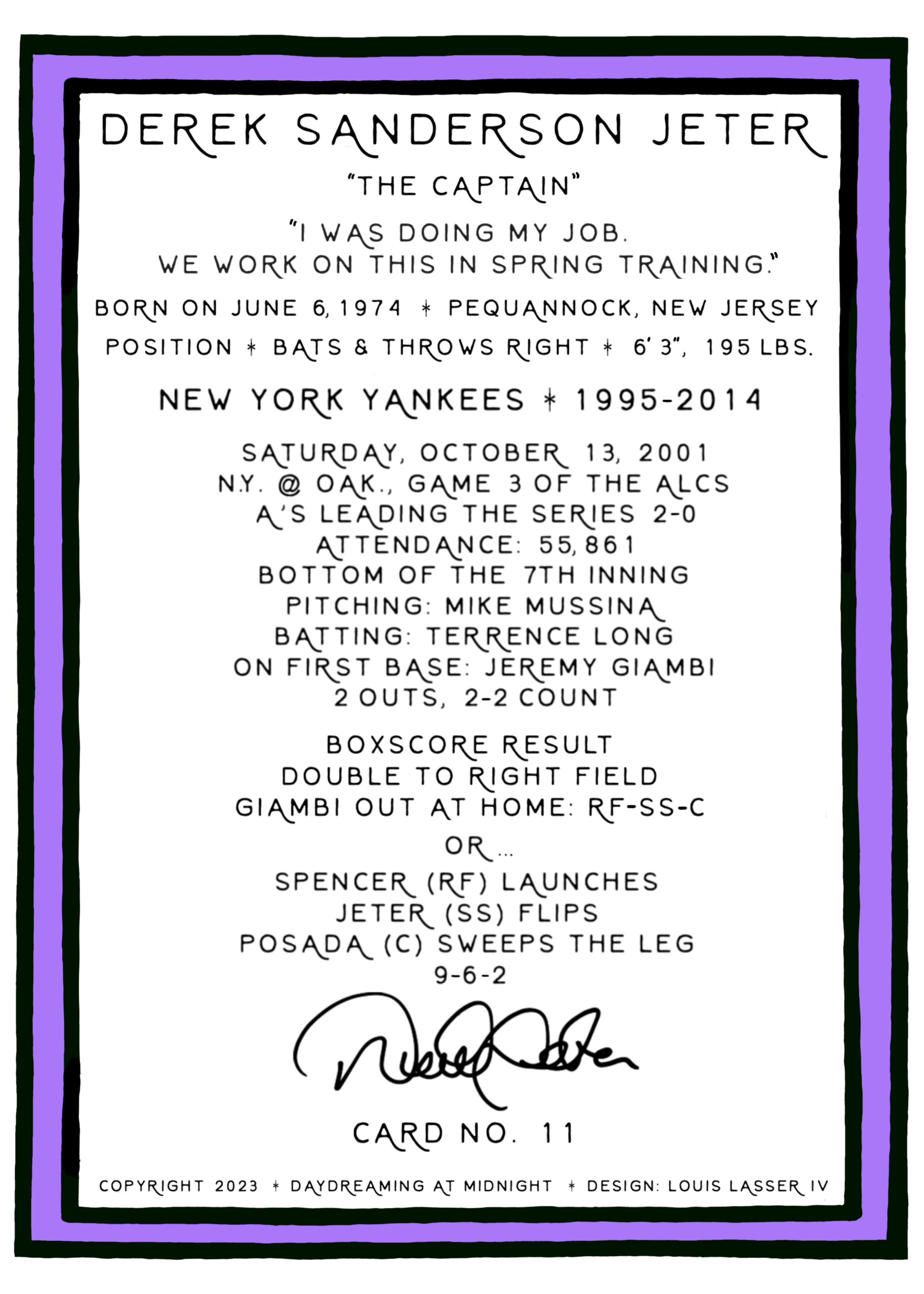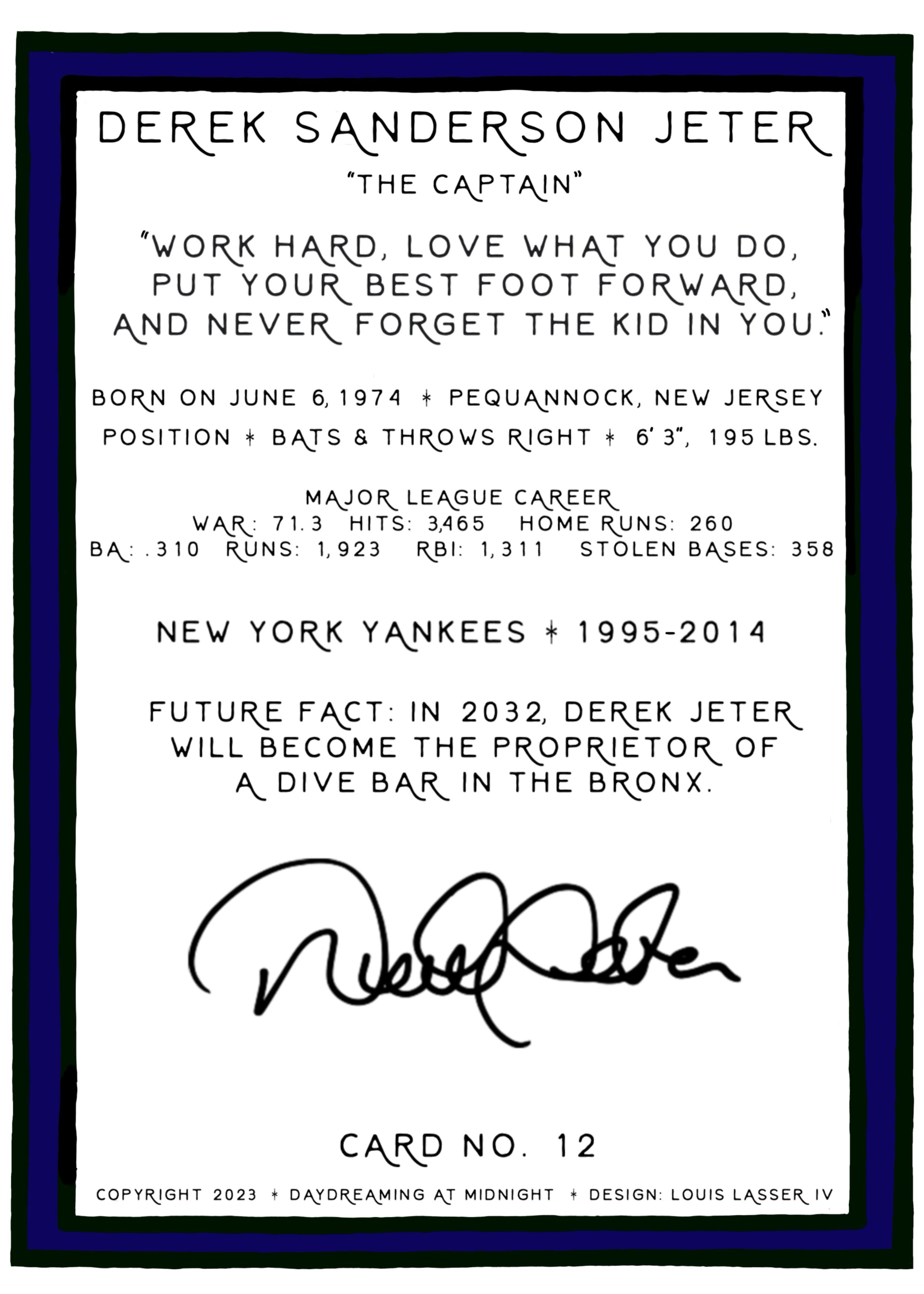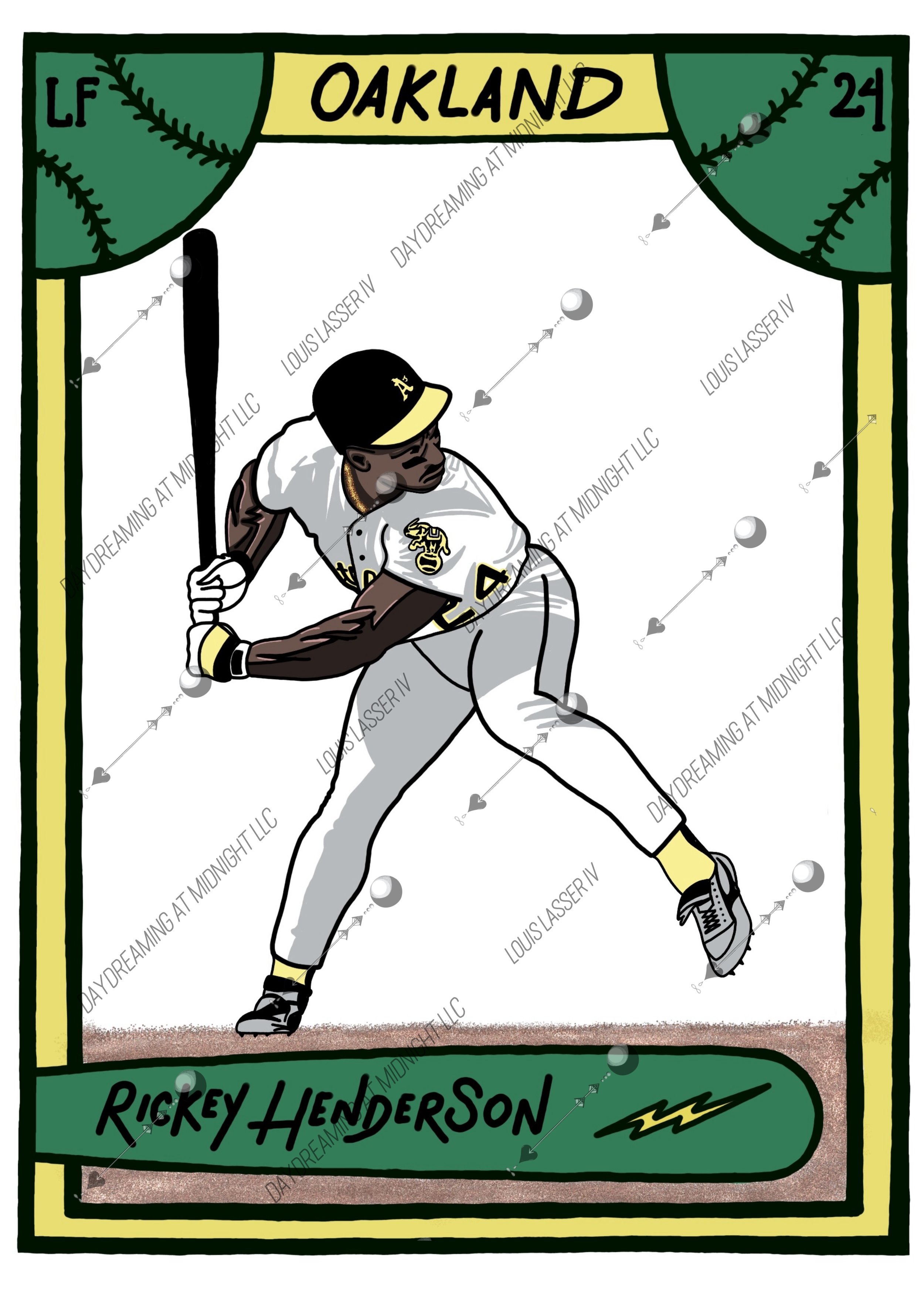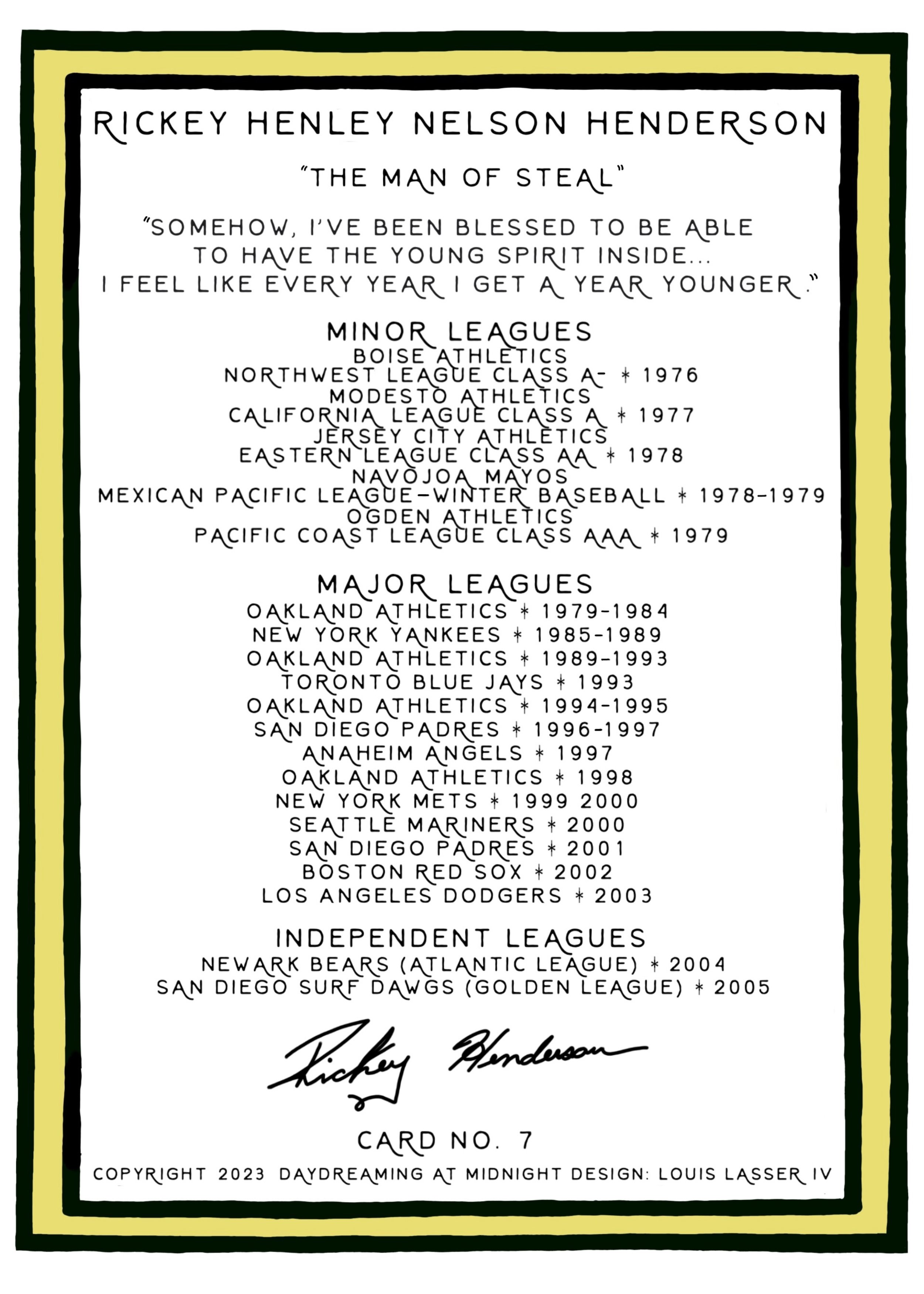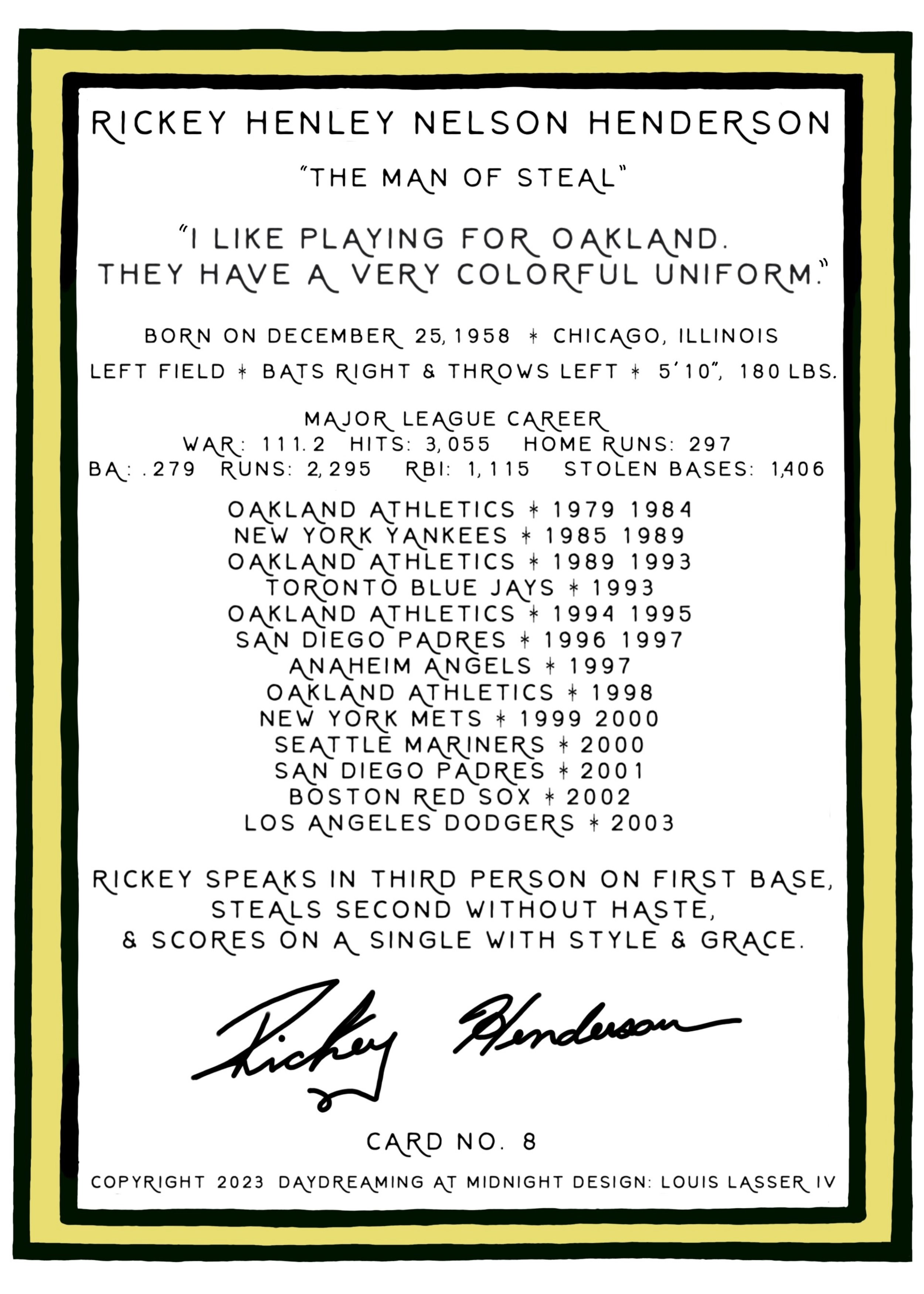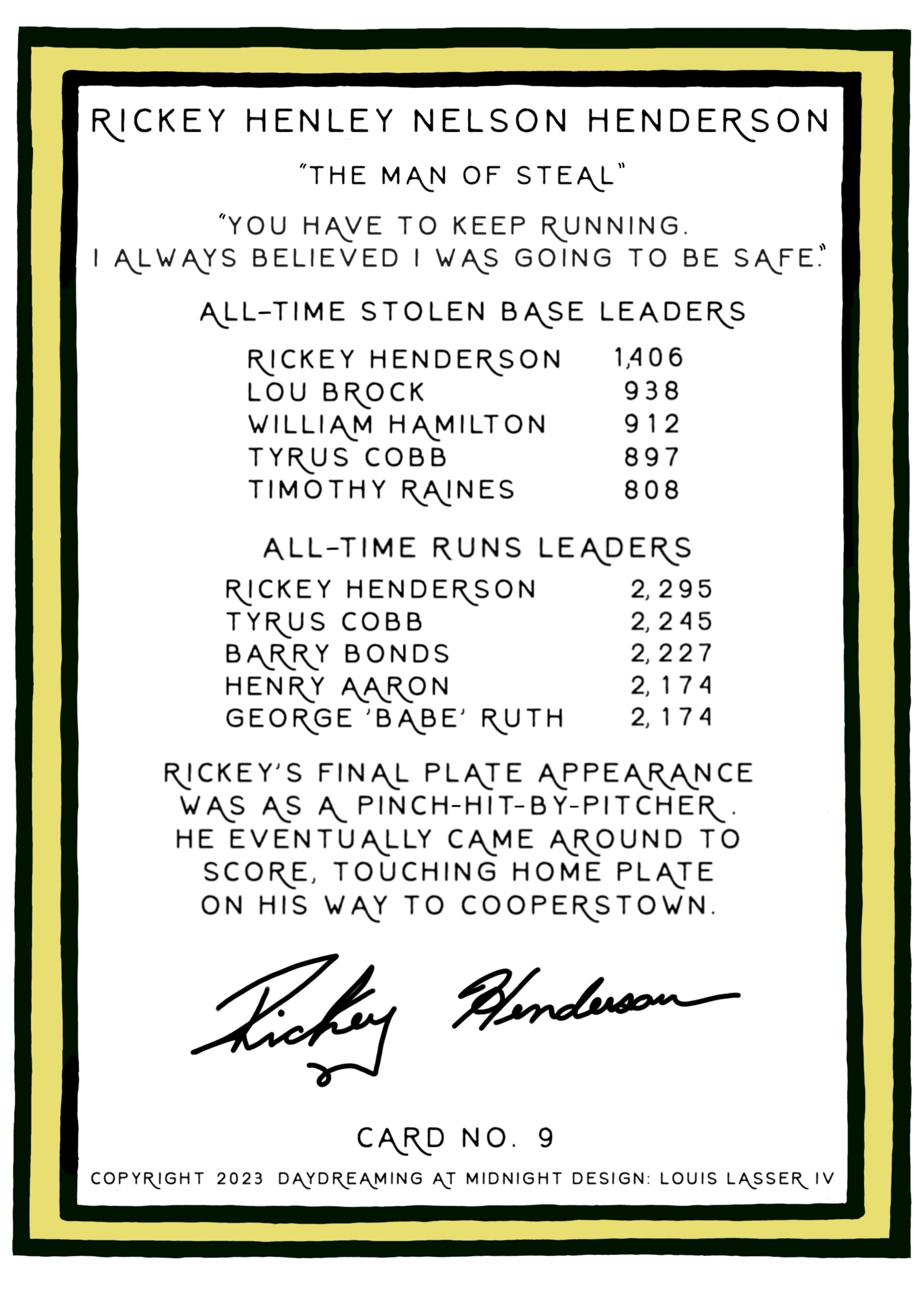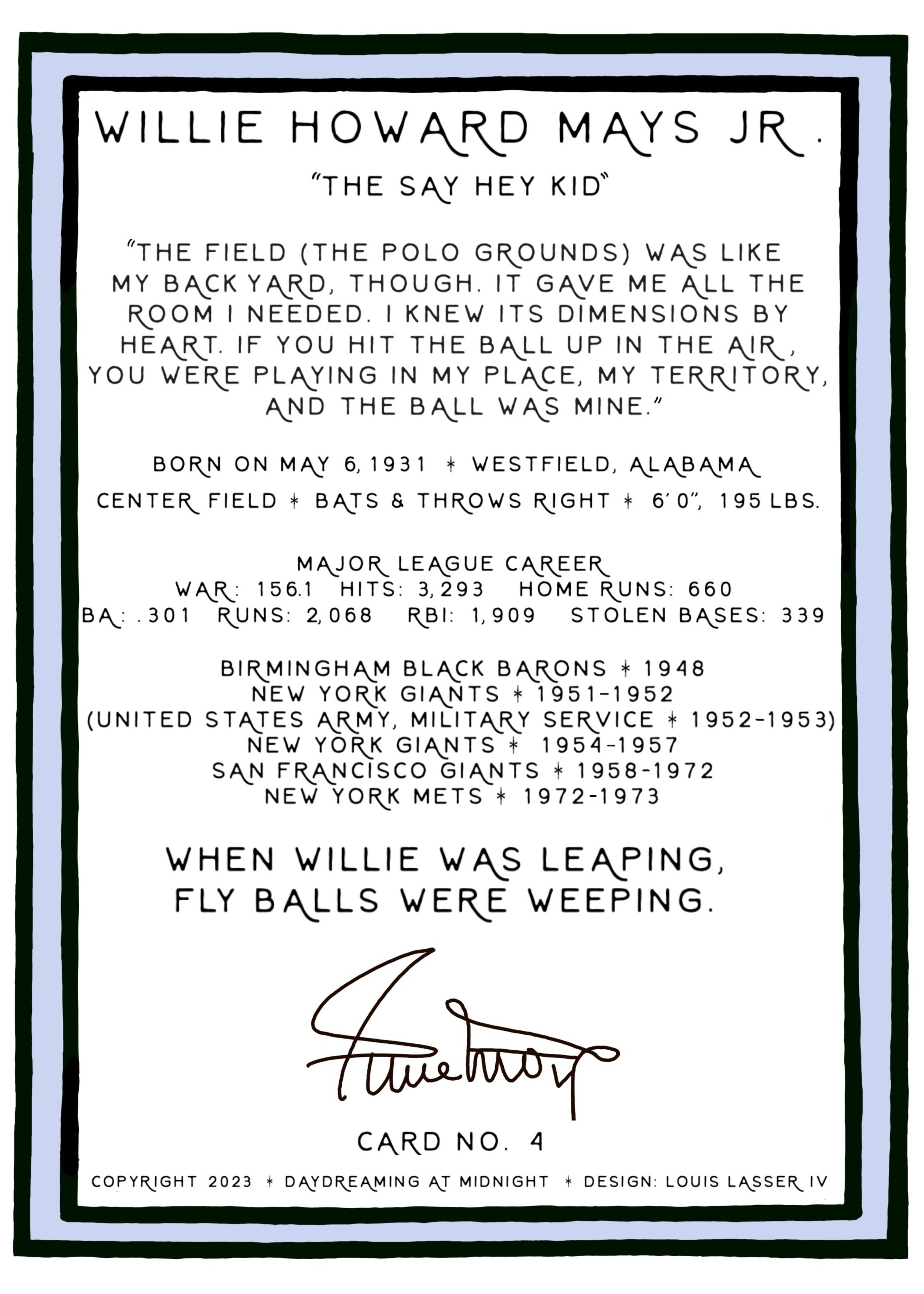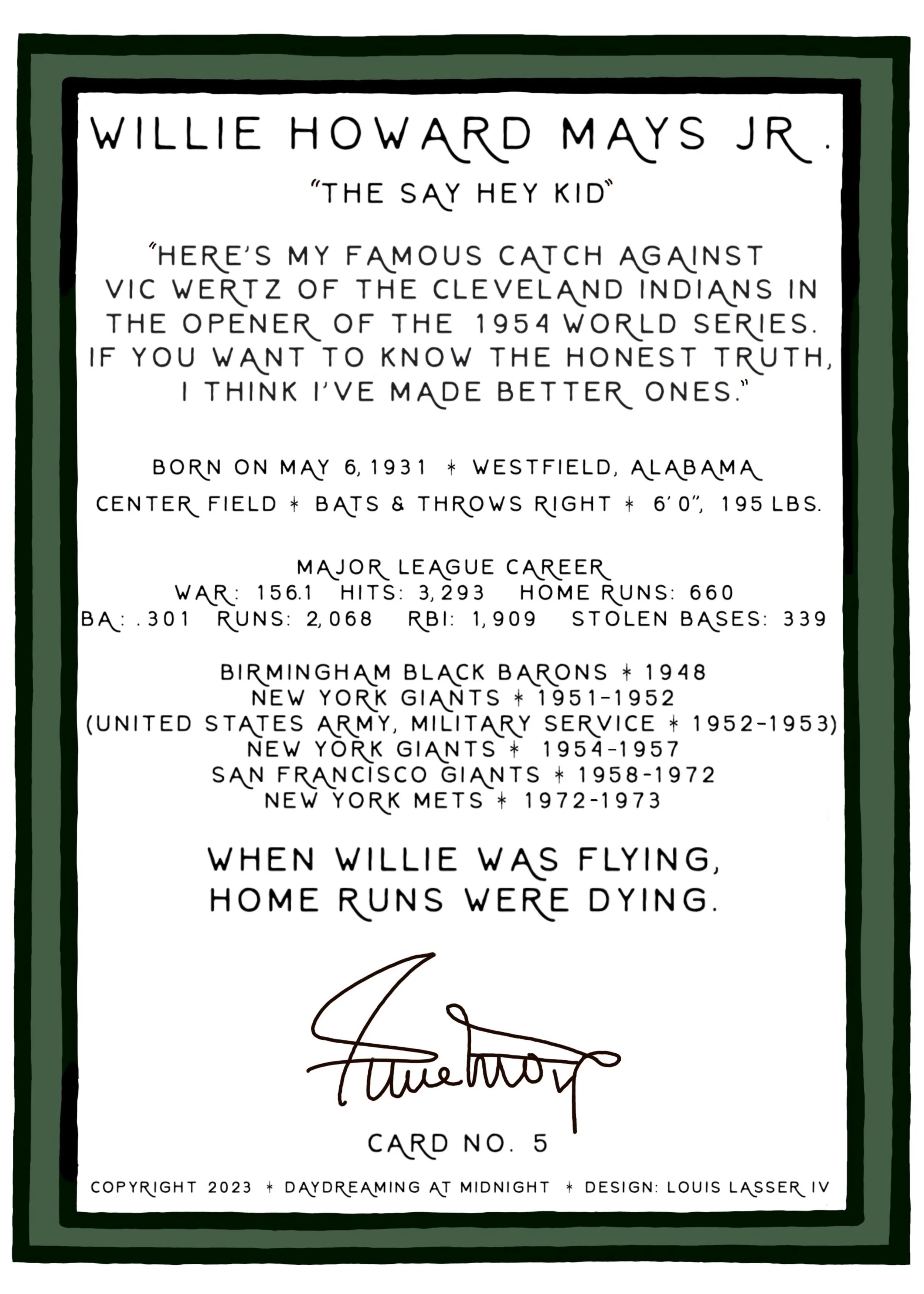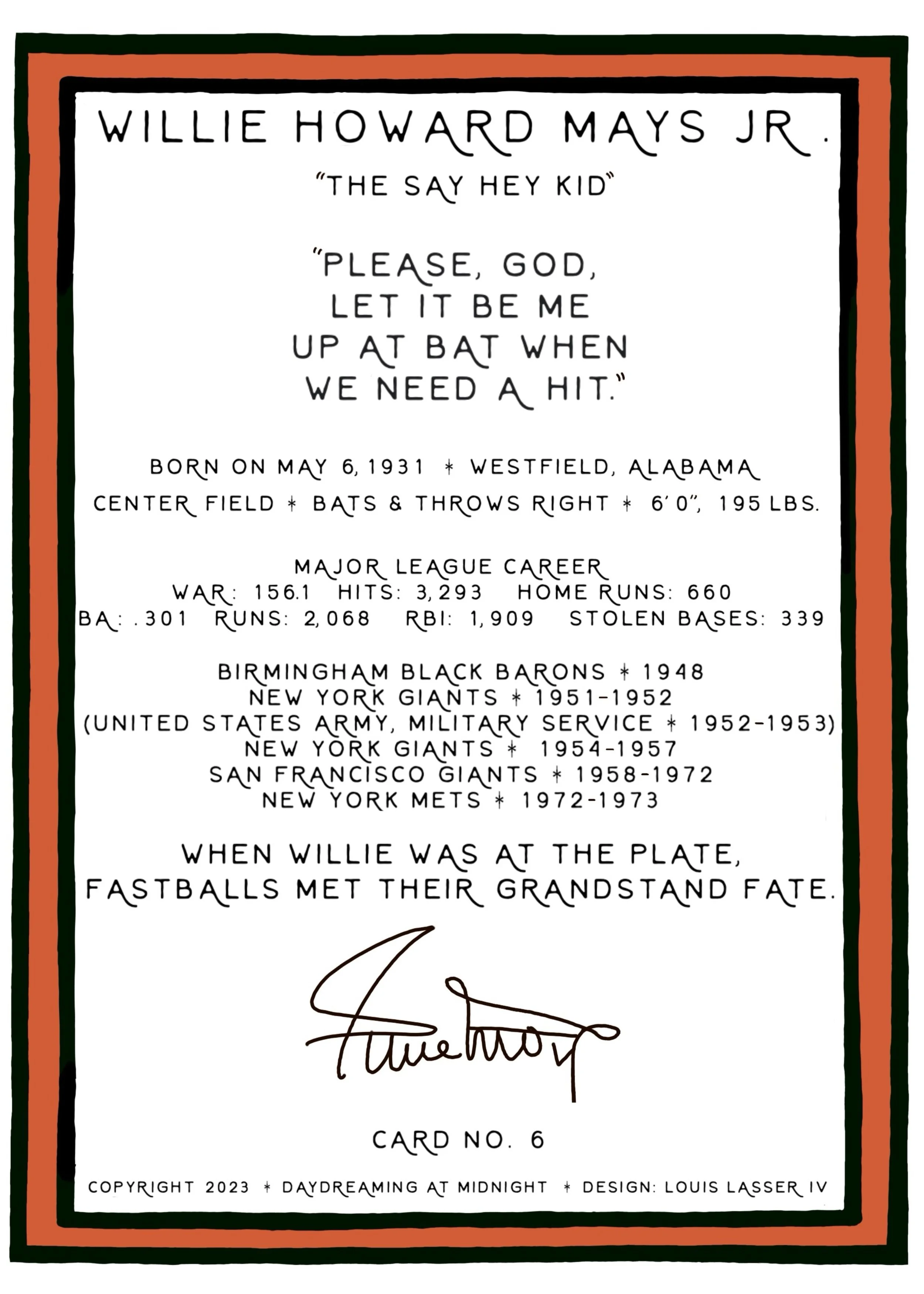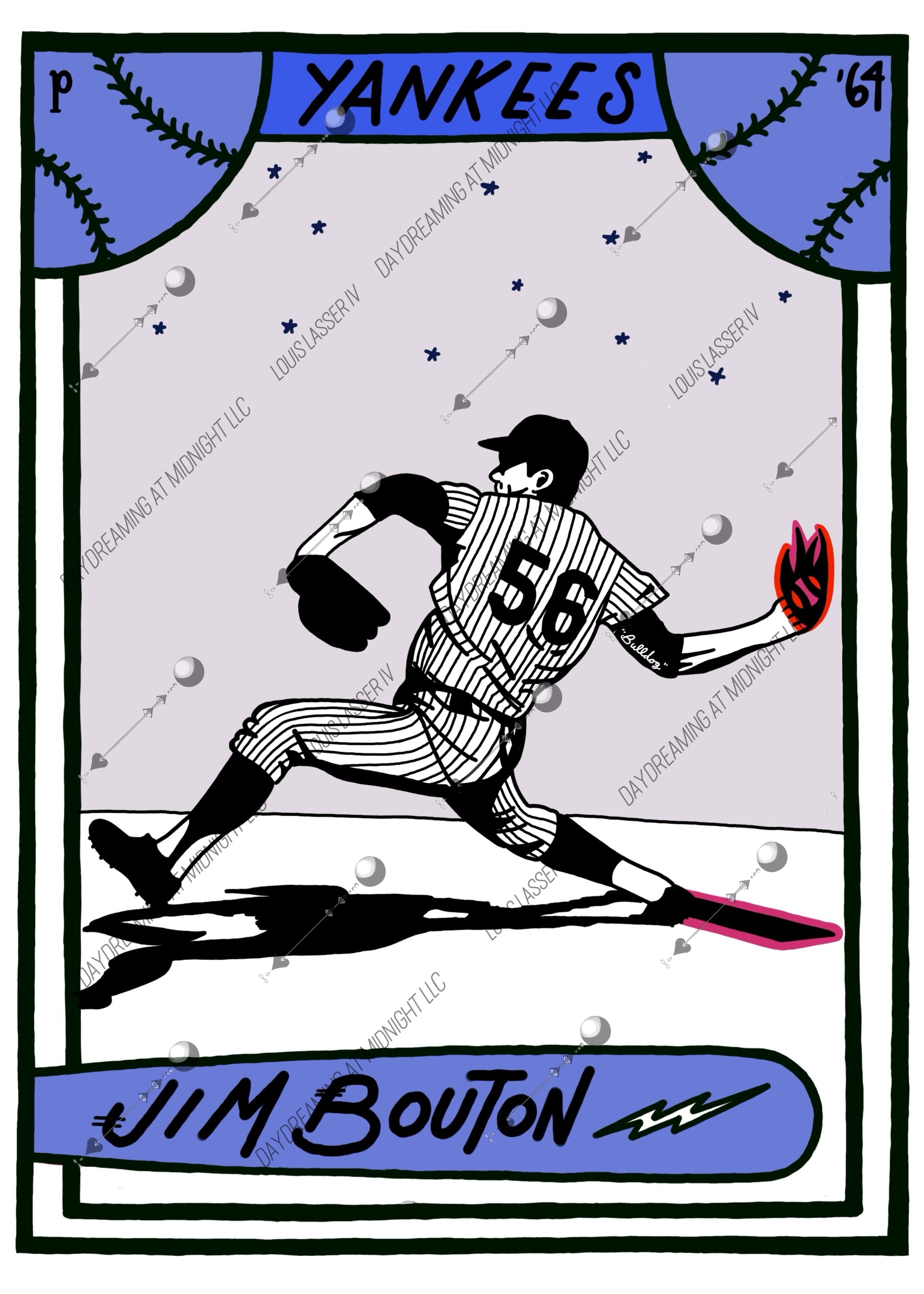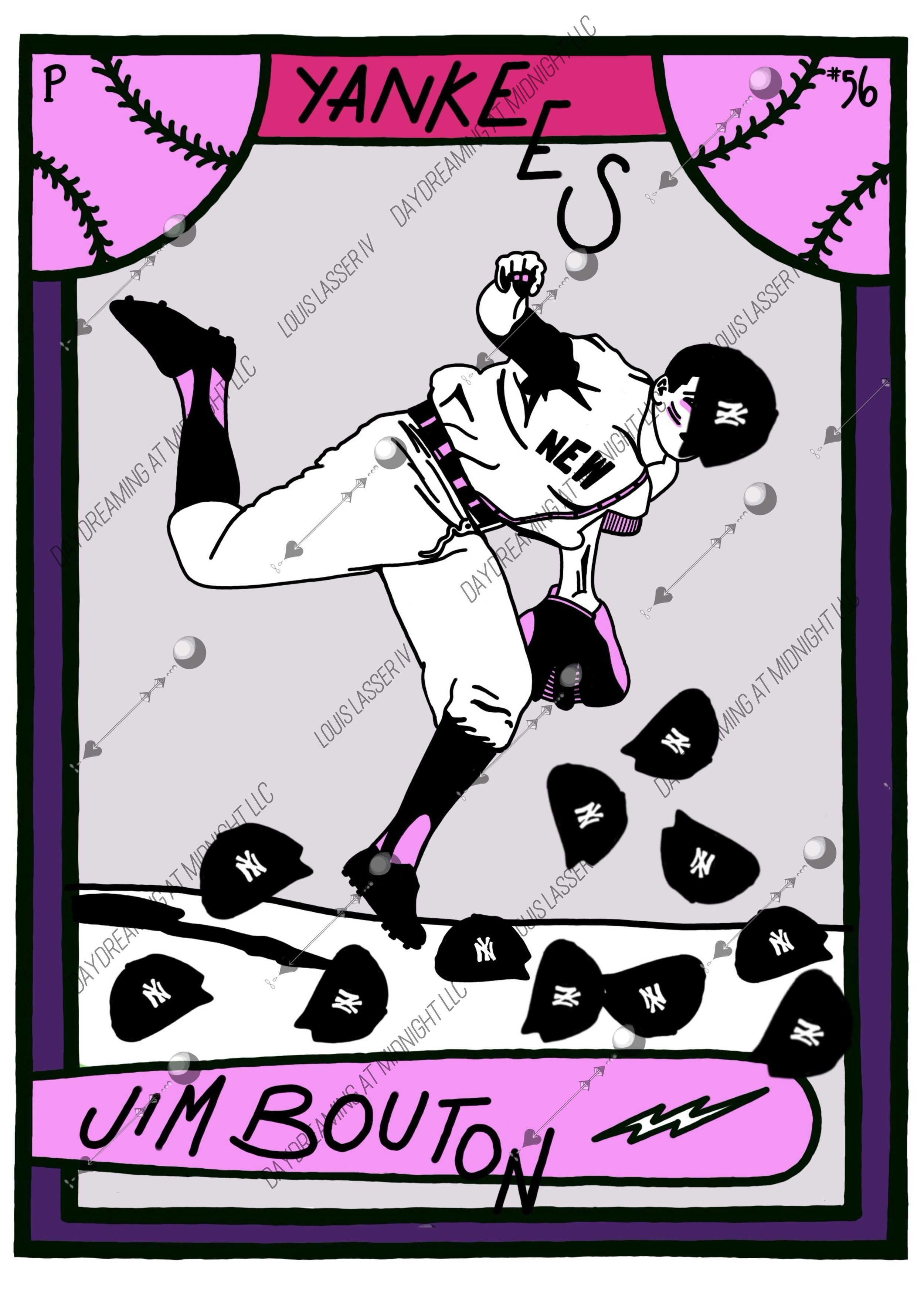Baseball Cards * Series 2: The Nicknames of Chris Berman, PFT Commenter, & Big Cat
(Part 2)
To continue the collection from the last post, here are the cards for some of my favorite Chris Berman nicknames: Bo Diddly Jackson, Ron Cey it Ain’t So, Rick Really Big Schu, Rick See Ya Later Aguilera, Sandy Remember the Alomar Jr., and Tim PurpleRaines.
The Bo Jackson card cracks Bo Diddly’s six-string guitar neck over a first-string knee. A cursory search for how much force it takes to break a baseball bat yields a figure between 4,000 pounds and 6,000 pounds. Another quick search regarding the force of a professional boxer’s punch weighs in around 1,000 pounds. These numbers are subject to many other factors, but it seems to me, if we give Bo’s left and right arms a combined 2,000 pounds of force, and his up-cut knee-punch another 1,000, it leaves at least 1,000 pounds of force more to be made up by sheer will, self-criticism, and disproportional disappointment. Bo knows that some strikeouts create beautiful outbursts. I knows that if it were me, I would’ve ended up leaving the game with an intact bat, a bum knee, and a forever strike three.
The Ron Cey it Ain’t So card is an asthmatic shoutout to Weezer’s Blue Album, complete with an updated track listing. The Rick Really Big Schu card is an optimistic view about putting your best foot forward, even when it’s your pivoting back foot. The Rick See Ya Later Aguilera is a Berman lyrical marvel inspired by Bill Haley & His Miami Vice Comets. Sandy Remember the Alomar Jr.’s card depicts an Indian defending the storied structure, absorbing a heater after it was fired by a Texas Ranger. And then there’s Tim Purple Raines, the fastest man with two heels on two wheels. Ok, maybe the second-fastest. Rickey Henderson is the infinite and reigning king, so Tim Raines will have to remain a Prince.
Stepping up to the plate next, this series will appear to be highlighting something below the baseball player’s belt, and given the recent news regarding the new uniformsas reported here by Molly Knight, it seems timely, even though it’s purely coincidental. The next series brings attention twelve of the great names that have been peppered throughout baseball’s long history: Johnny Dickshot, Dick Pole, Dick Lines, Dick Starr, Dick Burns, Dick Dietz, Dick Hoover, Bill Dickey, Randy Johnson, Pete LaCock, Ed Head, and Candy Cummings. It features portraits of each player and their lifetime stats and bios on the reverse side. It’s called, with a wink, Dick Pics.
If you enjoyed this post, please share it with another baseball fan :)
If you’d like to see the full set, visit louislasseriv.com/baseballcards
—Lou

